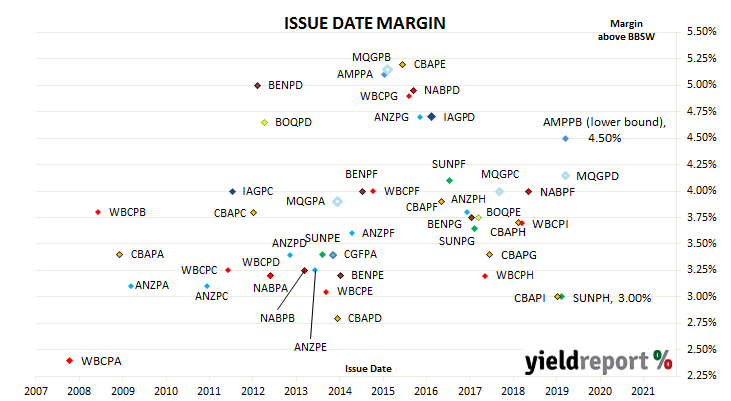AMP has been in the wars in recent years. Its plan to divest its life insurance arm has faced various obstacles, including opposition from some of its major institutional shareholders as well as New Zealand regulators. It has also scrapped its 2019 interim dividend, a course of action typically taken only by companies suffering balance sheet challenges.
In recent years, when one of a company’s existing hybrids approaches its first call date (or first optional exchange date), speculation turns to the likelihood of a replacement hybrid security. However, in the case of AMP’s latest hybrid offering, this is not the case. Unlike the issuers of other hybrid securities, AMP’s new issue has come two years prior to the first call date of its existing listed hybrid (ASX code: AMPPA). This issue is not for the purpose of refinancing or rolling over an existing security which is approaching its maturity date; it is about raising new capital.
AMP plans to raise $200 million via an issue of Capital Notes 2 (ASX code: AMPPB) securities, with the ability to raise more or less than this amount. The new securities will be perpetual, convertible, subordinated, unsecured notes and the proceeds will be used to fund “one or more APRA-regulated entities within the AMP Group.”
The new notes have some features in common with equities and some features in common with debt securities. Distributions are at the discretion of directors but they are calculated according to a set formula with reference to the $100 face value of the securities. The notes will qualify as Additional Tier 1 (AT1) capital under the Basel III bank regulatory framework, which means they have the now-standard “event” clauses which may lead to early conversion into ordinary shares or a write-off of the capital notes should APRA require it. In the event AMP were wound up (and APRA had not already forced a write-off), its hybrids would rank above ordinary shares but below ordinary debt securities and other liabilities.
The new capital notes have an indicative distribution rate equivalent to 3 month BBSW plus a margin of 450bps to 470bps, the highest range since Insurance Australia issued its capital notes (ASX code: IAGPD) at a margin of 4.70% in late 2016. The final margin will be determined by a “book build” on 3 December 2019. A book build is a tender process managed by investment banks on behalf of the issuer in which investment institutions each place bids for a set volume at a price/yield. (This is the same way as the AOFM holds tenders to sell government bonds each week). If history is any guide, then the margin is likely to be set at the lower end.

